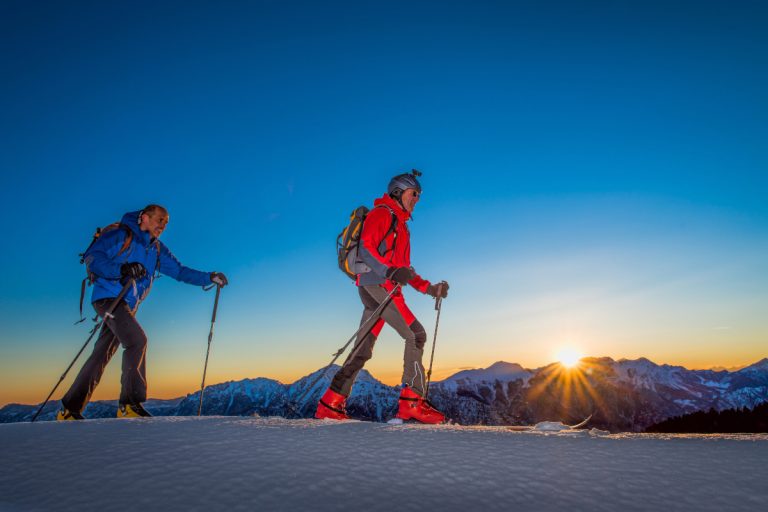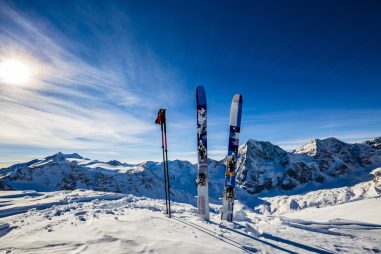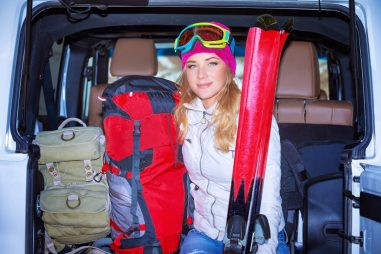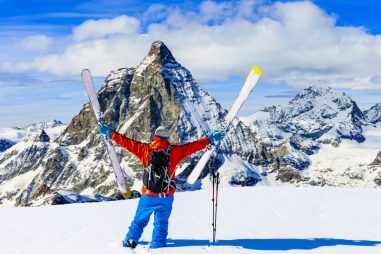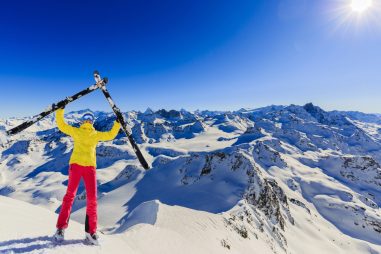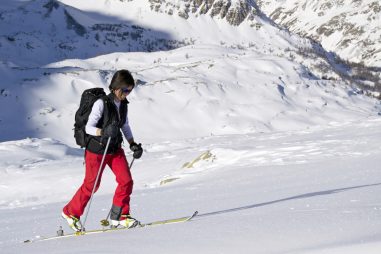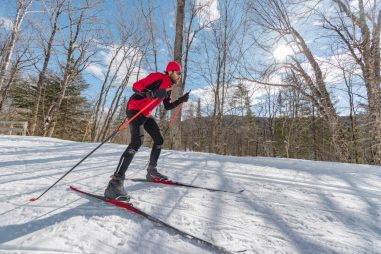Classic cross country skiing is popular, especially among beginners. It’s easy to learn and the groomed tracks provide a comfortable and predictable ride. But backcountry and touring skiing are vastly different.
You see, despite the similar movements, classic, backcountry, and touring are for different types of skiers. One is friendlier to beginners while the other is for more experienced skiers. Because outside the groomed tracks, you’re exposed to nature’s vitality. It pulls hard on those with a deep sense of adventure.
Here are all the similarities and differences between the two styles. It’s everything you need to know to increase your knowledge about the sport and help you with your skiing goals.
Is Backcountry Skiing the Same as Classic Cross Country Skiing?
Classic and backcountry are both cross country skiing styles. And although they share the same movements, everything else about the two styles is different.
Your experience from classic cross country skiing won’t be the same as backcountry skiing. One stays on track and follows a specific trail. Meanwhile, the other goes off track and leads to a new adventure.
What Is the Difference Between Cross Country Skiing and Backcountry Skiing?
There are several differences between the two styles. The most notable is the environment and terrain.
Classic cross country skiing is done on groomed tracks. Beginners and advanced skiers can enjoy this style within the confines of the track. On the other hand, backcountry skiing is done outside the tracks.
You don’t need groomed tracks for backcountry skiing. As the name suggests, you can do this on any backcountry terrain. Instead of groomed tracks, all you need is deep and fresh snow and you can ski anywhere you want. Naturally, there’s a lot of unpredictability that adventure seekers will enjoy.
Another major difference is the equipment. Classic cross country skis are designed for groomed tracks. You need skis that are lighter to make movements easier. You can also go faster on flat terrain.
Backcountry skis are designed for skiing in various snow conditions. This could mean skiing on the backcountry terrain where snow is fresh and thick. Or it could mean skiing on rough and icy terrain. You’ll need equipment that can help you traverse such conditions.
Cross Country Skis vs. Backcountry Ski
Because the skiing environment differs, you’ll need a different set of skis for each.
For the groomed tracks of classic skiing, skis used are usually longer and more narrow. They’re also lightweight to give you an easier time with the movements on track. The combination allows you to move faster whenever you choose.
As for backcountry skiing, your skis depend on the terrain, snow conditions, and your skiing style. You may also encounter more uphill and downhill terrain. So you can use different skis based on these factors.
But generally, backcountry skis have steel edges that provide grip on icy surfaces. These skis don’t go as fast as their classic counterparts. That’s because backcountry skiing is often about an easy pace to enjoy the great outdoors.
Cross Country Skis vs. Backcountry Skis for Beginners
Classic cross country skiing is easy to learn for any beginner. The movements are similar to walking with poles. So you can learn this style in a few days of consistent practice. Even if you have zero skiing experience, you can get into this sport easily.
It’s different for backcountry skiing. Before you can explore the backcountry, you need to have decent skiing skills. This makes it easier for you to navigate unexplored and unpredictable terrains.
As for backcountry skiing, it’s important to understand avalanche safety and rescue. Because you’re not in a controlled environment, there’s always the risk of avalanches. So it’s not recommended for beginners.
If you have little or no skiing experience but want to take on backcountry skiing, then you’ll have to take classes. This is how you’ll learn skiing basics and the necessary safety measures.
Can You Use Backcountry Skis for Cross Country Skiing?
It’s possible to use backcountry skis on groomed tracks for cross country skiing. However, you’ll have a couple of limitations.
The first is speed. Backcountry skis are thicker and usually shorter. They aren’t designed for speed. So expect to ski at a slow and steady pace. This is especially true for metal-edged skis.
The second is the snow condition. The metal edges on backcountry skis are ideal for fresh, soft snow and uphill climbs. You might experience too much friction on the hard snow of groomed tracks. This will also affect your speed.
What Is the Difference Between Touring Skiing and Classic Cross Country Skiing?
The differences between the two styles are in the skiing terrain and equipment.
Classic skiing is always done on groomed tracks. It’s mostly flat terrain which gives you the opportunity for speed. For this, you’ll need equipment that’s appropriate for speed and movement on the tracks.
Touring skiing is much different. Similar to backcountry skiing, it’s done outside the tracks. You may also experience more uphill and downhill travel. And traveling downhill at high speeds is usually the main thrill in ski touring.
So with touring skiing, you use a different set of bindings. When going downhill, you can attach your heel to your skis. This makes it more similar to traditional alpine skis. This gives you the chance to be more aggressive when skiing downhill.
With ski touring, you also need to be trained and equipped for avalanche safety and rescue. Because you’ll be skiing in the untouched areas, avalanches are always a risk. Avalanche safety is always a priority.
Cross Country vs. Touring Skis
The skiing environment of classic cross country and touring is very different. They also have contrasting styles and functions. Thus, you need skis that will give you the best performance for their unique conditions.
What Is the Difference Between Cross Country Skis and Touring Skis?
With classic cross country skiing, you’re limited to skiing within well-maintained tracks. These tracks are groomed to make it easy for you to glide with minimal effort. So skis are stiff, light, and narrow. They also have double camber which allows the skis to arch off the snow.
In contrast, touring skis are for exploring the backcountry terrain. They’re designed for uphill and downhill skiing in mind. But like backcountry skiing, your skis will depend on the environmental conditions and your skiing style. So you can use something long and light like classic skis. Or you may need to use something shorter for more stability on rougher terrain.
But the main difference is found on the heel. With touring skis, you can connect the heel to the ski. This transforms it into something more similar to alpine skis. It’s designed to give you more speed, control, and stability as you go downhill at higher speeds.
Can You Use Touring Skis for Cross Country Skiing?
It’s perfectly fine to use touring skis on the groomed tracks of classic cross country skiing. As long as you use the long and light touring skis. It’s the type of skis that make traveling the backcountry terrain easier. It’s the same characteristics that make it suitable for classic cross country skiing.
However, because some touring skis have metal edges, they tend to be slower than the classic skis. So you’ll have to adjust your speed should you decide to use them on groomed tracks. Or you can opt for those without metal edges. They’re more compatible for exploring and groomed trails.
What Is the Difference Between Touring Skiing and Backcountry Skiing?
The only difference between touring and backcountry skiing is the equipment. In backcountry skiing, you use a heel-free system even when you’re going downhill.
In ski touring, you go heel-free when you ascend hills. But once it’s time to descend, you need to lock your heels to your skis. Like alpine skis, you get more control when turning and braking at high-speed descents. You don’t do this with backcountry skiing.
Other than that, many aspects are similar. They’re both done off-piste and allow visiting unexplored areas. They also require knowledge of avalanche safety, assessment, and rescue.
Backcountry Skis vs. Touring Skis
For both backcountry and touring skiing, you’ll be exploring off-trail. You’ll encounter different snow conditions, climbs, and descents. So you’ll need skis that can perform well in various situations. Maneuverability, stability, and weight are all important considerations when choosing your skis.
What Is the Difference Between Touring Skis and Backcountry Skis?
When it comes to backcountry and touring skiing, there is no set of skis designed for each. You have a range of skis to choose from. And what you choose depends on where you’re skiing, the snow conditions, and your skiing style. You should consider the right balance between all those factors.
For example, if you’ll be exploring in a mostly uphill area, you’ll need lighter and shorter skis. If you’ll be ski touring in deep snow with rougher conditions, you’ll need the stability of wider skis.
The ski shape and profile will also differ. Narrow skis traditionally have full cambers. They’re often used in mountaineering, racing, and hard-packed snow.
Then there are metal-edged and nonmetal-edged skis. Those with metal edges are shorter and aren’t ideal for groomed tracks. However, they give you more grip and control when traveling off track.
If you plan to race or do more downhill skiing, you should use shorter touring skis. These give you an easier time with turns. But if you want speed, longer skis are better.
When it comes to construction, touring skis give you tons of options. Again, the material you should get will be dependent on your preferred skiing setup.
So there’s no single ski that will work for all the backcountry and touring skiing you’ll be doing. Always choose the ski you need according to the environment, skill level, and how you want to ski.

